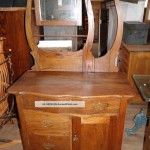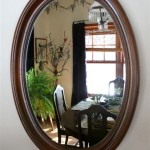Framed Mirrors in Bathrooms
A framed mirror is a significant design element in any bathroom, impacting both functionality and aesthetics. Choosing the right framed mirror involves considering various factors, from size and shape to frame material and style. This article will explore the essential aspects of incorporating framed mirrors into bathroom spaces.
Size and Placement Considerations
The size of a framed mirror should be proportional to the size of the bathroom and the vanity it accompanies. A large mirror can make a small bathroom appear more spacious, while an oversized mirror in a large bathroom might feel overwhelming. Generally, the mirror should be slightly narrower than the vanity. As for placement, the standard height places the mirror's center approximately 58-60 inches from the floor, allowing comfortable viewing for individuals of varying heights. However, this can be adjusted to suit specific needs and preferences. Furthermore, the mirror's bottom edge should be a few inches above the backsplash, preventing water damage to the frame.
Frame Styles and Materials
The frame of the mirror contributes significantly to the overall bathroom style. Various materials offer different aesthetic and practical benefits. Wood frames introduce warmth and a natural element, suitable for traditional, rustic, or farmhouse bathrooms. However, wood requires proper sealing to withstand the humid bathroom environment. Metal frames, such as those made of aluminum, stainless steel, or brass, provide a sleek, modern look and are more resistant to moisture damage. Ornate, carved wood frames can complement Victorian or classical bathroom styles, while simple, minimalist metal frames suit contemporary designs. Choosing a frame finish that complements existing bathroom hardware, such as faucets and light fixtures, creates a cohesive and polished appearance.
Enhancing Bathroom Aesthetics with Framed Mirrors
Framed mirrors can be strategically used to enhance the bathroom's aesthetics. A large, ornately framed mirror can serve as a focal point in a spacious bathroom. In smaller bathrooms, a frameless or thinly framed mirror can create a sense of openness. The frame’s color and finish can be chosen to complement the bathroom's color scheme. A dark frame against a light wall creates contrast and visual interest, while a light frame against a dark wall can brighten the space. Moreover, incorporating multiple framed mirrors, especially in larger bathrooms with double vanities, adds symmetry and balance to the room.
Practical Considerations for Bathroom Mirrors
Beyond aesthetics, practical considerations are crucial. The bathroom environment is inherently humid, so choosing a frame material that can withstand moisture is paramount. Wood frames require proper sealing and regular maintenance to prevent warping or damage. Metal frames offer greater moisture resistance but can be prone to fingerprints and smudges. Regular cleaning is necessary to maintain the mirror's clarity and the frame's appearance. Consider the mirror's functionality, such as incorporating built-in lighting or a defogger for added convenience.
Illumination and Framed Mirrors
Proper lighting is essential for the effective use of a bathroom mirror. Wall-mounted sconces flanking the mirror provide balanced illumination, minimizing shadows and enhancing visibility. Overhead lighting can supplement sconce lighting, ensuring adequate brightness for tasks like applying makeup or shaving. Avoid positioning lights directly above the mirror, as this can create harsh shadows. Consider the color temperature of the light bulbs as well. Warm light creates a relaxing ambiance, while cool light provides better clarity for detail-oriented tasks.
Maintenance and Care
Maintaining the framed mirror preserves its appearance and longevity. Regular cleaning with a gentle glass cleaner and a soft cloth prevents streaks and water spots. Avoid using abrasive cleaners that can scratch the mirror or damage the frame. For wooden frames, occasional polishing with a suitable wood polish can help maintain their luster and protect them from moisture. Metal frames can be cleaned with a damp cloth and a mild detergent. Promptly address any signs of damage, such as chips in the frame or discoloration, to prevent further deterioration.
Integrating Framed Mirrors with Bathroom Design
Framed mirrors offer an opportunity to enhance the overall bathroom design. Consider the existing décor style and choose a frame that complements it. A sleek, minimalist frame complements modern and contemporary bathrooms, while an ornate, carved wooden frame suits traditional or classic styles. The frame's color and finish should harmonize with other design elements, such as the wall color, vanity, and bathroom fixtures. By thoughtfully selecting and integrating the framed mirror, one can create a cohesive and visually appealing bathroom space.

How To Frame Out That Builder Basic Bathroom Mirror For 20 Or Less Design Mirrors Diy

Mirror Frame Diy How To Update A Basic Bathroom Our Faux Farmhouse

Diy Framed Bathroom Mirrors Living With Lady

How To Frame A Mirror

Jacobean Wood Framed Mirror Handmade Rustic Bath Wall Vanity Light Large 18x18 40x30 Custom Sizes Remodeling

White Vanity With Natural Wood Framed Mirror Bathroom Counter Decor Rustic Mirrors

Shiplap Reclaimed Styled Wood Framed Mirror 20 Stain Colors Full Length Wall Bathroom Vanity Big Over Double Sink

Matte Black Mirror Frames Bathroom Trim Mirrormate

Modern Posh Accent Decorative Rectangle Framed Mirror With Metal Frame For Bathroom Living Room China Home Decoration Made In Com

Whitewash Rustic Wood Framed Mirror Bathroom Wall Vanity Small Large Farmhouse 18x18 40x30 Custom Sizes Remodeling








